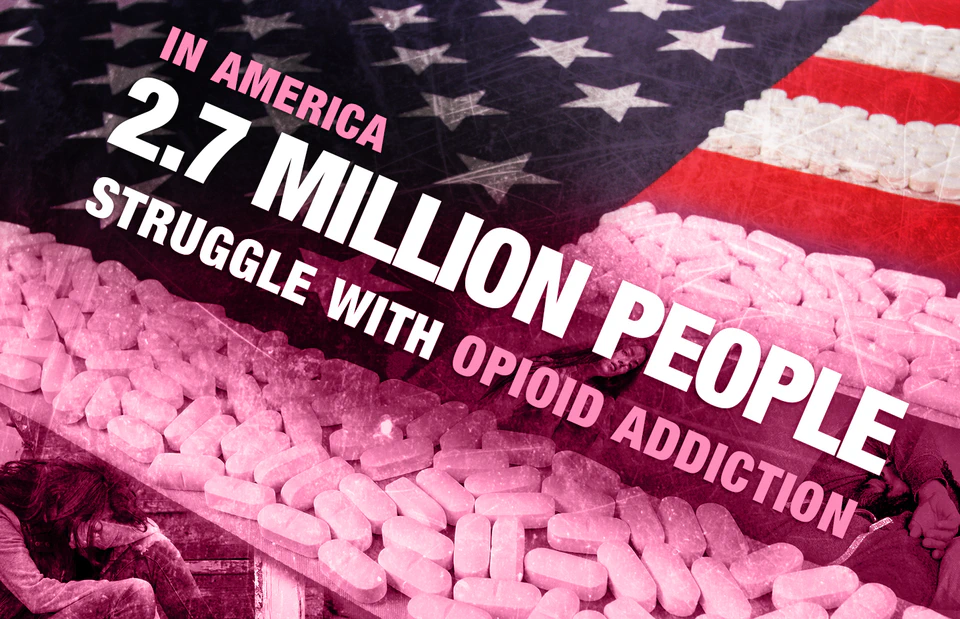Opioid Addiction

Find more information about opioid and opioid addiction with professionally reviewed up-to-date articles. Getting informed is the first step in overcoming opioid addiction.
More
Opioid drugs are those derived from opium or that are similar in chemistry and function. In prescription form, they alleviate pain. While they have long been important in this role, they have also addicted millions of people and have killed hundreds of thousands in the U.S. alone.

Find more information about opioid and opioid addiction with professionally reviewed up-to-date articles. Getting informed is the first step in overcoming opioid addiction.
More
The signs and symptoms of opioid addiction are vital to identify because opioid addiction can turn deadly at any moment.
More
Stay informed on the latest news, trends and statistics on opioid addiction and opioid-related news.
MorePrescription opioids follow in the footsteps of opium, which has been harvested from the opium poppy for thousands of years. Morphine was derived from opium in the 1800s and was widely used during the Civil War for soldiers who had been injured in battle.
Heroin was developed at the end of the 19th Century as a replacement for morphine, with the idea that it was not addictive. When its addictiveness was discovered, its manufacture and use were banned. Heroin shifted to the illicit market. It was not long after that a long list of new prescription opioids began to be developed to treat pain.
Because of the aggressive marketing of these painkillers in the mid-1990s, what was once a useful solution for pain became a national tragedy, with millions of people addicted.1 Some struggled with addiction after using these drugs as prescribed, and others began to self-prescribe pills to deal with disappointment, boredom, fears or some other condition. Many people ran out of money for prescriptions or their doctors terminated their prescriptions so they moved to the illicit market to find heroin.
For many years, the primary illicit opioid on the market was heroin. The 20th Century saw the arrival of illicitly manufactured fentanyl that poured into the United States from overseas and from Mexico.
Small quantities of pharmaceutical fentanyl have always found their way to the illicit market. Then in 2014, law enforcement personnel began seeing illicit fentanyl from clandestine labs.2 Fentanyl quickly became the number one killer among Americans who suffered a drug overdose.
The term fentanyl encompasses a family of chemically-similar drugs. The most common types of fentanyl found on the illicit market are:3
These drugs can be tens, hundreds or even thousands of times more powerful than morphine. The equivalent of a few grains of salt can kill.
The Centers for Disease Control and Prevention calculates that opioids of all types are responsible for seven out of ten overdose deaths.4,5
It’s estimated that 2.7 million people are addicted to an opioid.6 Approximately 2.3 million are addicted to prescription pain medication and nearly 700,000 are addicted to heroin.
The CDC notes that synthetic opioids (primarily fentanyl and its analogues) are now killing nearly 70,000 people per year. This number has more than doubled since 2015.
Sources
NIH. “The Promotion and Marketing of OxyContin: Commercial Triumph, Public Health Tragedy.” National Institutes of Health, 2009. NIH ↩︎
DEA. “DEA Issues Nationwide Alert On Fentanyl As Threat To Health And Public Safety.” Drug Enforcement Agency, 2015. DEA ↩︎
U.S. Sentencing Commission. “Fentanyl and Fentanyl Analogues.” USSC, 2021. USSC ↩︎
CDC. “Provisional Drug Overdose Death Counts.” Centers for Disease Control and Prevention, 2022. CDC ↩︎
CDC. “Maps & Graphs on U.S. Drug Overdose Death Rates.” Centers for Disease Control and Prevention, 2022. CDC ↩︎
SAMHSA. “Key Substance Use and Mental Health Indicators in the United States.” Substance Abuse and Mental Health Services Administration, 2021. SAMHSA ↩︎